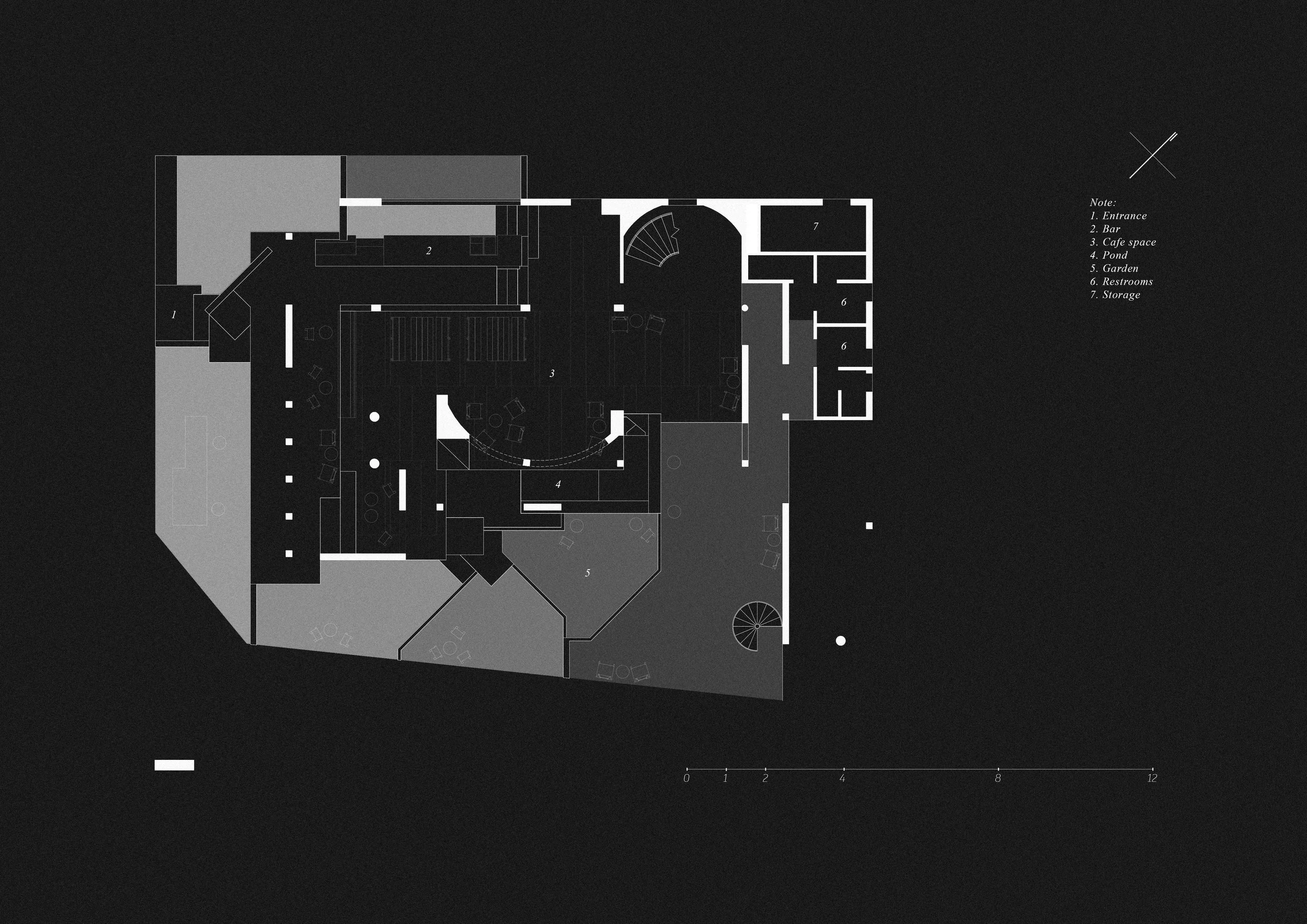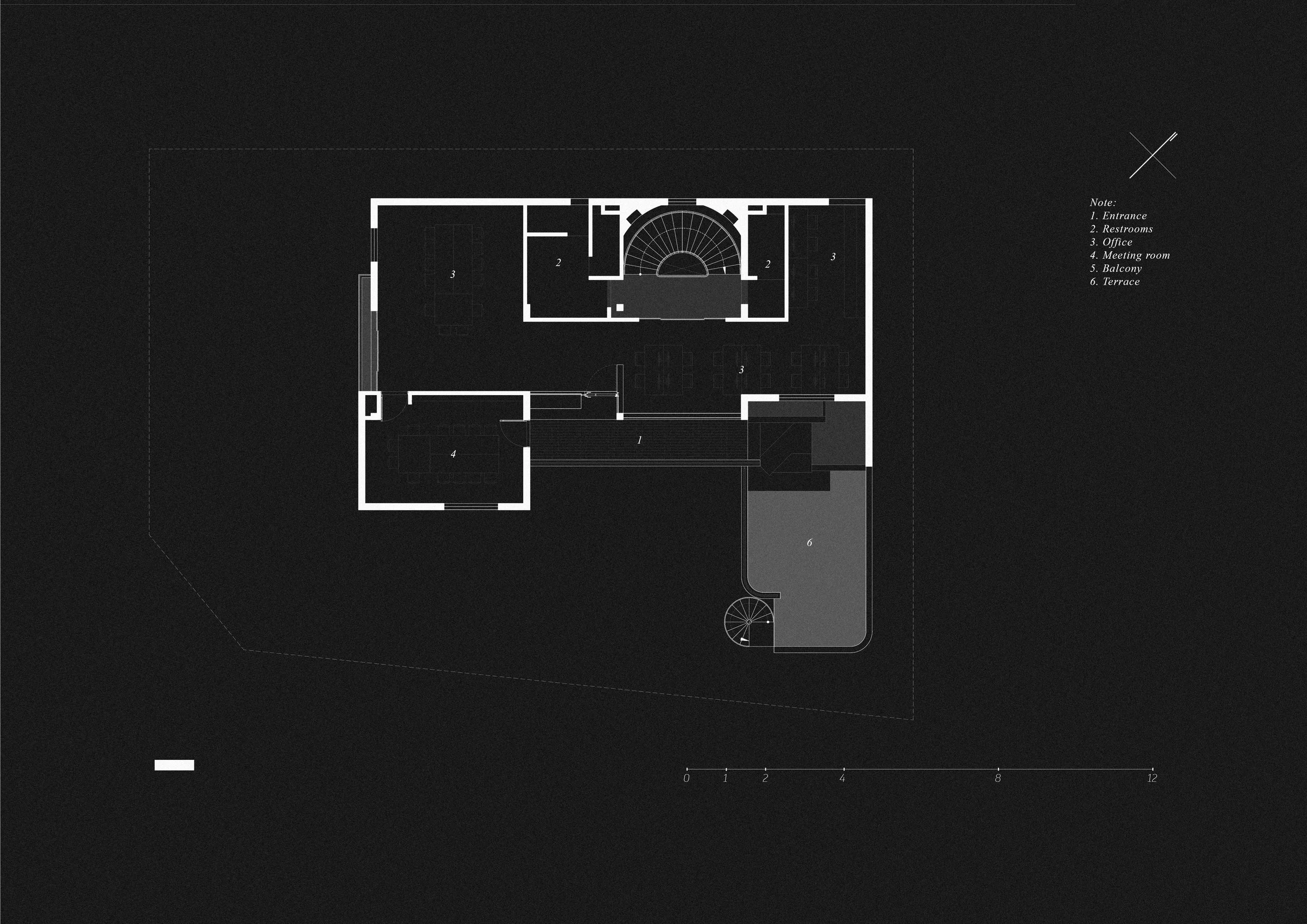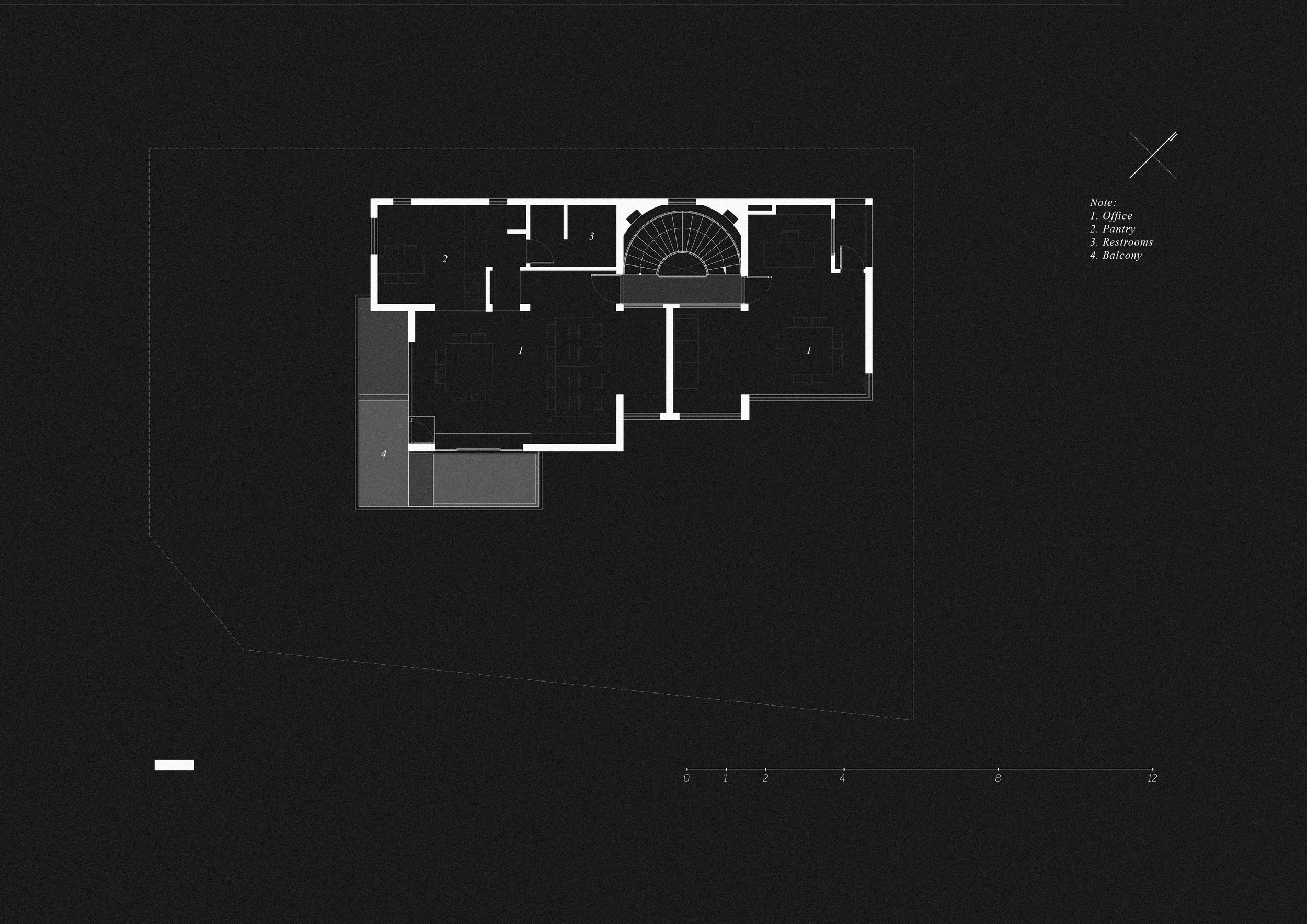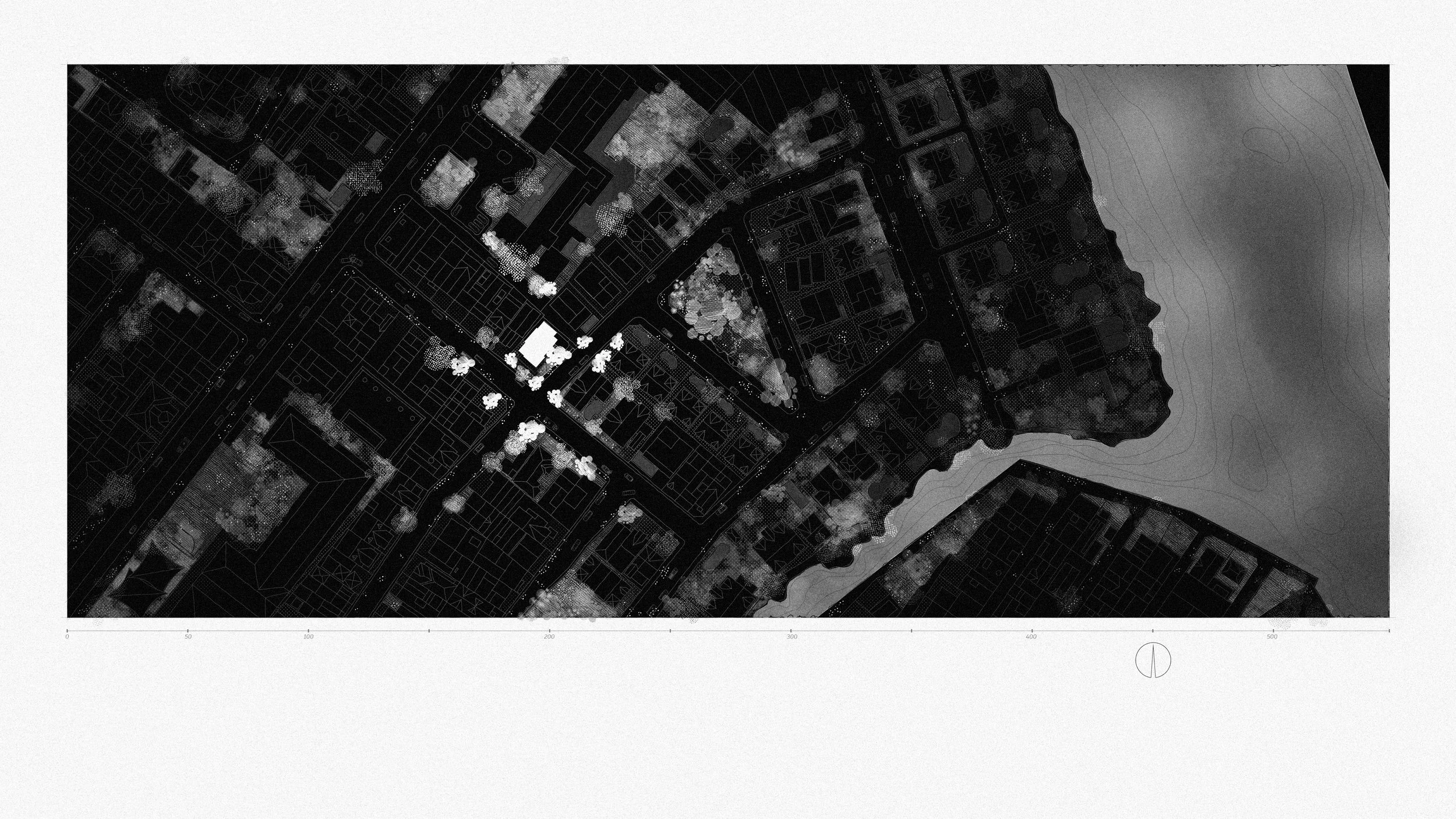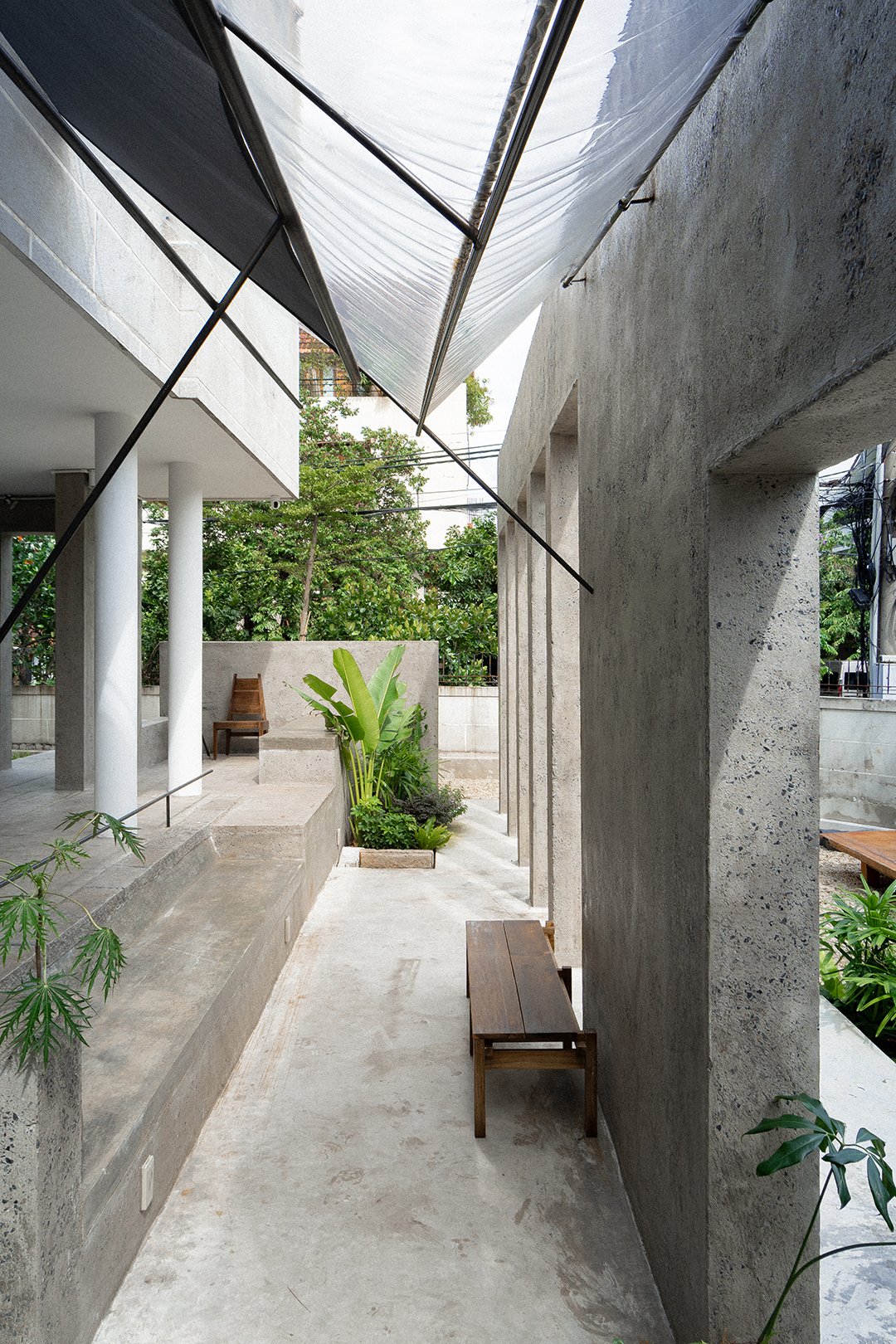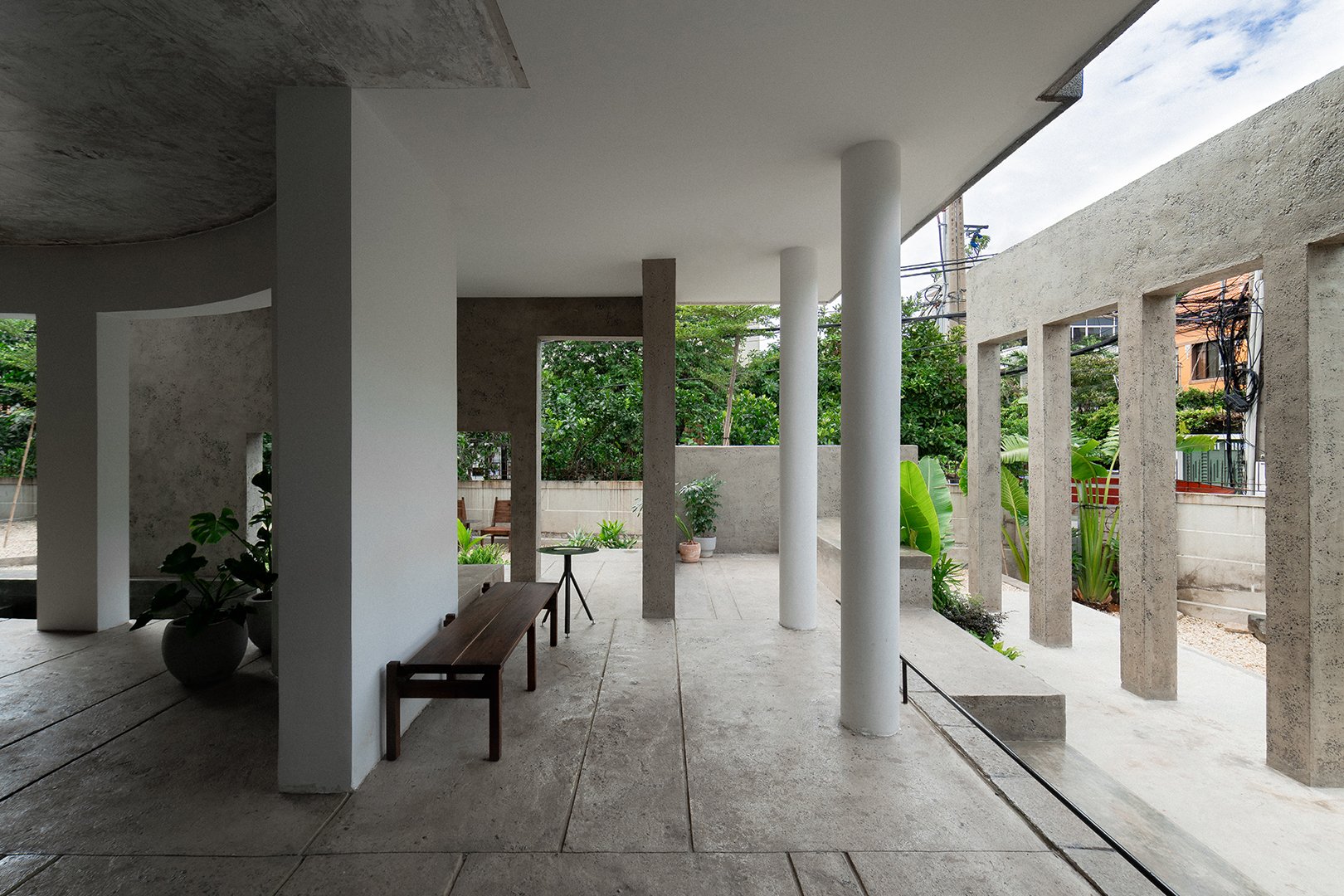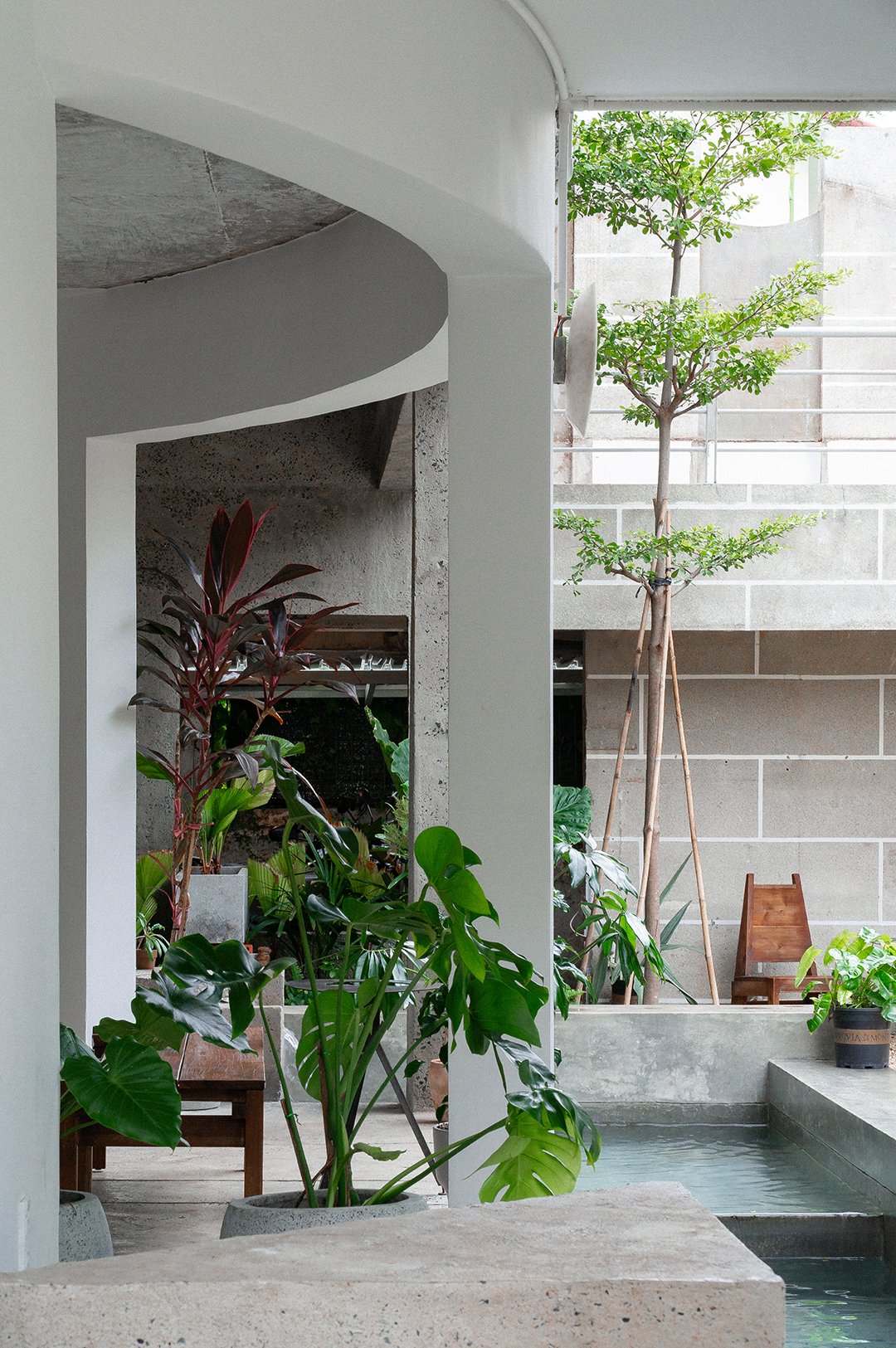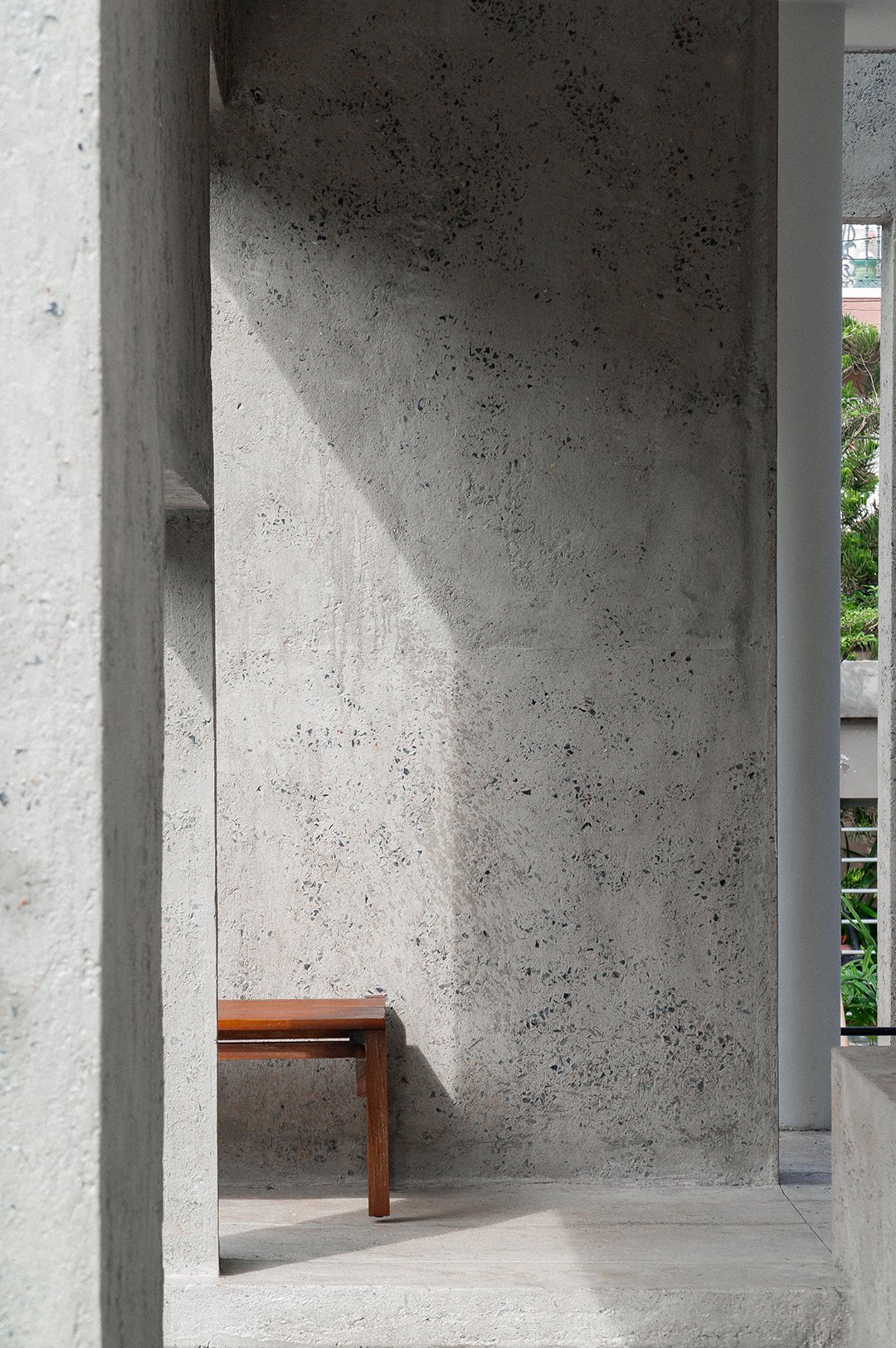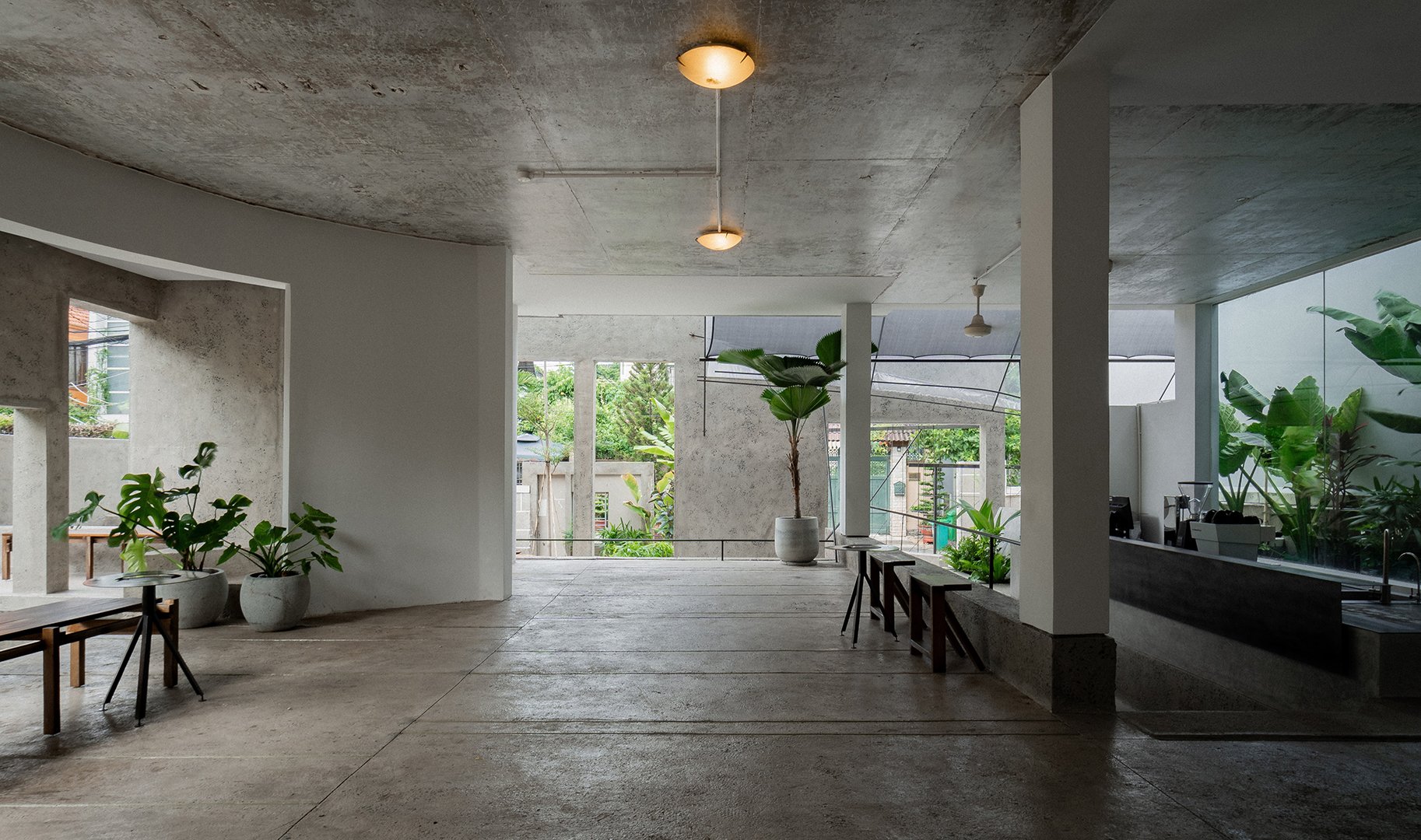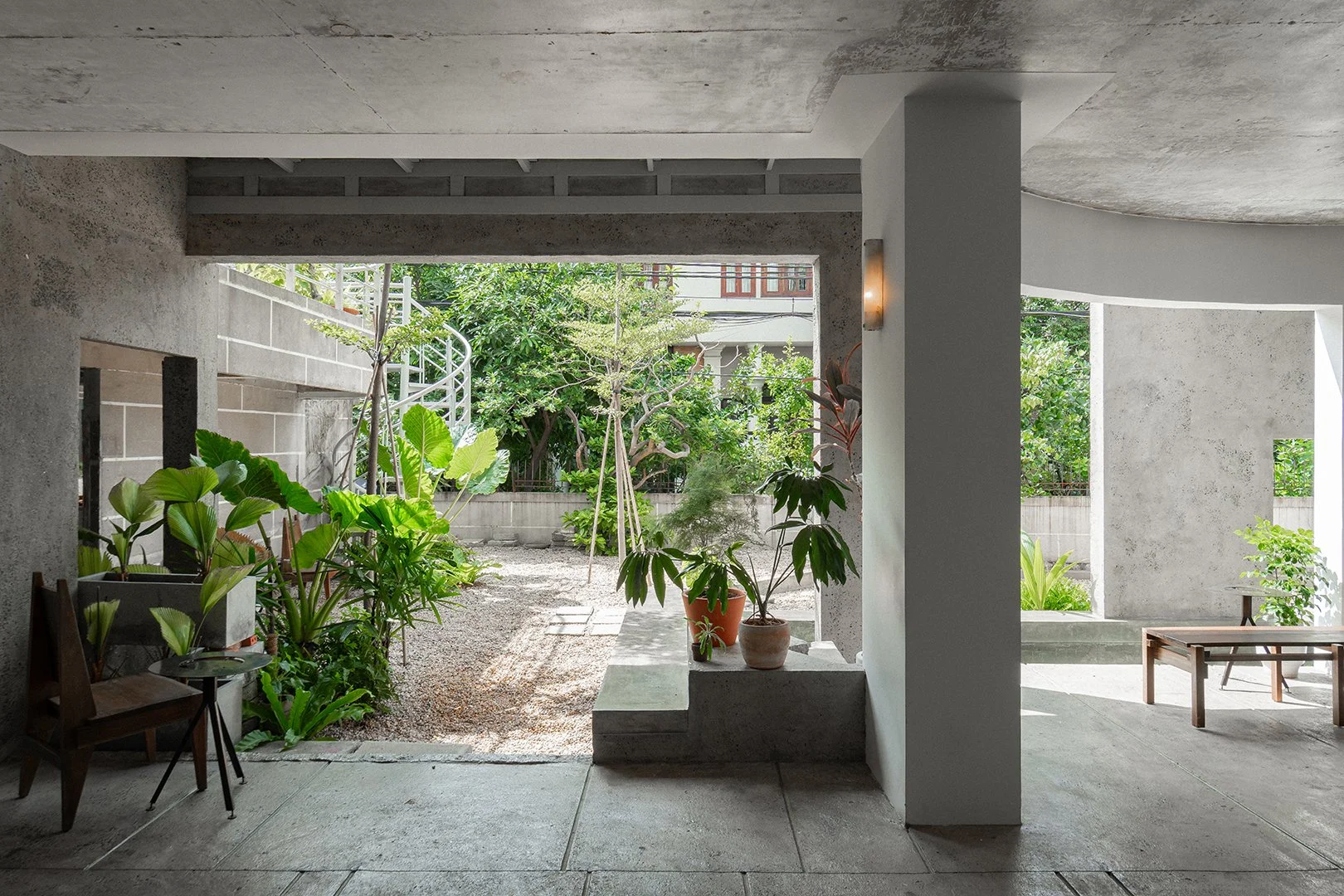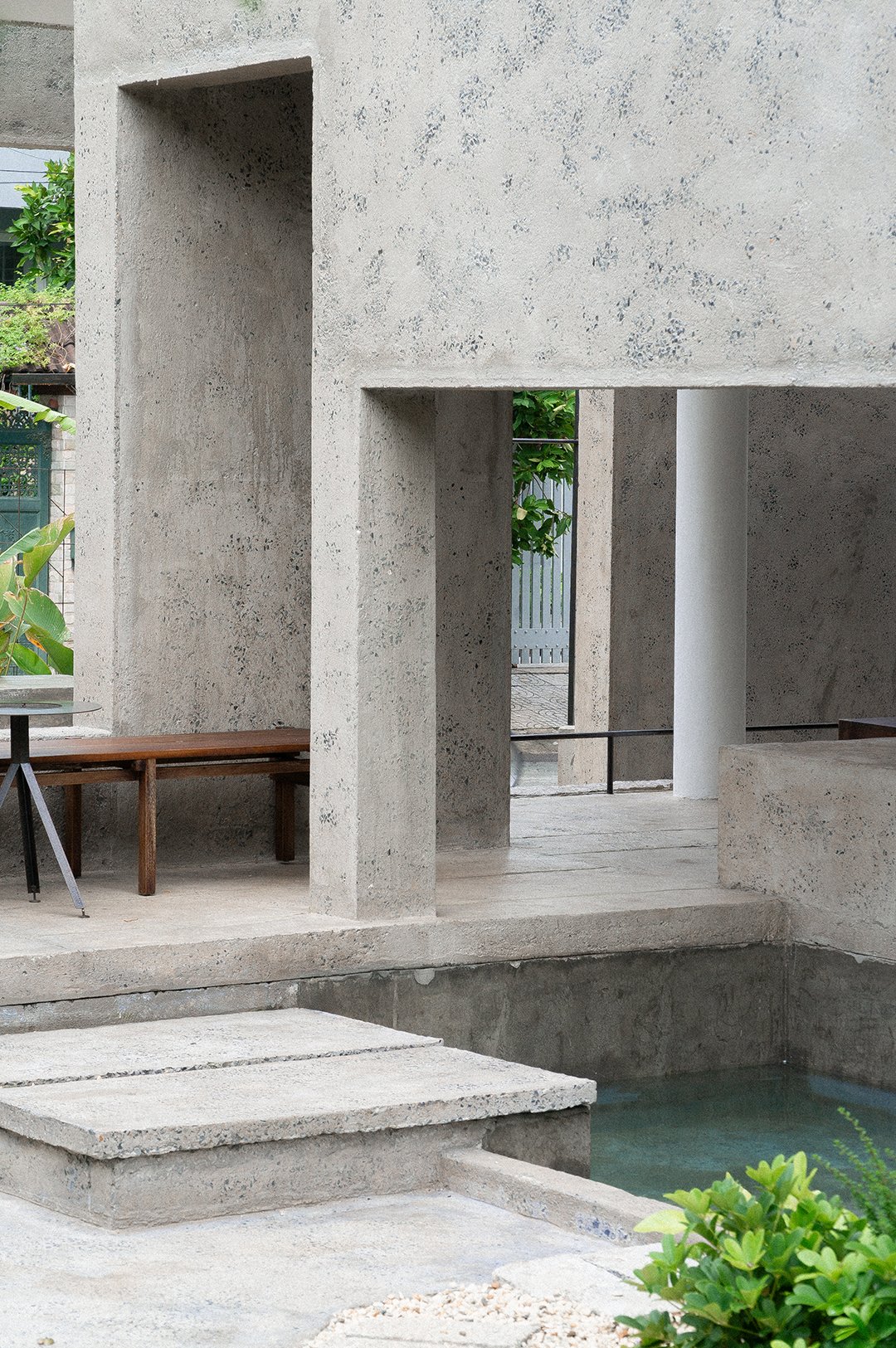A Collage of Outcasts
Location : Nguyen Van Huong, Thao Dien, Thu Duc, Viet Nam
Area : 810sqm
Year of completion : 2024






Thao Dien is a high-standard living area in Ho Chi Minh City, predominantly inhabited by the middle class.
The architecture in this area reflects a perspective of detachment from context – a deliberate disregard for integration, vividly marked by perimeter walls reaching 2.6 meters high – the maximum allowable height for structures in this area. In reality, some houses have exceeded this height to fulfill the utmost need for privacy.
The building, prior to renovation, was an abandoned house for five years. This is a region often facing tidal flooding, prompting the former owner to establish a base floor height of 1100mm from the sidewalk – including the garden.
When we examined the potential for converting interior spaces into an open environment, this elevation immediately became a defining factor that separated the building from the street. It shifted the view upward, offering a broader perspective, almost encapsulating the entire area, where a deeper sense of place could be felt.
At this point, the surrounding landscape became one of the most critical elements, affirming its complementary role and intervention within the interior, shaping our initial thoughts on how to develop the project.
We identified three “restrictive elements” that suppressed ideas for improving the relationship between the building and the local landscape: Comfort – Extreme consistency in style – Outdated notions of efficiency.
We are beginning to accept limitations, such as privacy equating to walls, subjective architectural arguments being misunderstood as universal concepts, and the idea that architecture can only be interpreted and measured by architectural frameworks.
But there is something deeper: we must redefine how we approach happiness and how we use design to create a life that is exciting, fulfilling, and complete.
We can also re-evaluate the role of the body and imagination in experiencing significant places.
For us, “imagination” represents a “comprehensive vision,” without which reality appears as an assortment of equally important, incomprehensible events.
When considering the boundary walls dividing private spaces and streets or sharing new ideas about exploiting “thresholds,” we believe that personal spaces and community intellect are always connected, even if invisibly.
We explored the concept of coexistence: How can diverse individuals live together? We believe it relates to the question of thresholds, and naturally, windows are a part of this. Windows are part of thresholds, as are other architectural elements like balconies and doors. These threshold components in architecture significantly influence how we coexist. They are boundaries between public and private, individual and societal. They embody warmth and coldness, visibility and invisibility, dirtiness and cleanliness.
Some columns located at the boundary/threshold of the structure have perfectly served as frames. Their circular sections achieve minimal expression when viewed from various angles, creating a basic abstraction akin to a picture frame. Others have square sections, recessed into the shadows of the building, asserting autonomy through their own shadow and substantial thickness.
The architectural expression is reduced to mere signs – conveyed through frames.
These architectural elements need to be considered to mediate between different states and qualities more than other components, offering a refreshed perspective on thresholds in architecture.
The ground floor space is an ensemble of views arranged to correspond with the area's landscape characteristics, the project's site, and reactions to natural light.
The scenes presented are not valued for their measurable qualities but for their metaphorical potential.
Here, despite the extreme simplicity of the experience, we divided it into small parts for visitors to enjoy each perspective one at a time.
Reality and the beauty of nature are interpreted through ideas and metaphors in morphological terms, open to subjective transformation and speculation, viewed through the frames.
As one walks along the pathways from the premises into the building, the scenes successively appear and transform continuously, allowing our perception to transcend what our feet can sense. In other words, the space actively invades our perception and moves through us.
We considered the awareness of reality through sensory perception and imagination as a creative process because it achieves a higher order than mere documentation, proof, and control.
This series of actions is a typical example of promenade architecture – a historical concept proposed by Le Corbusier in 1930, wherein the journey through a building is celebrated through a series of spatial experiences, aiming to break away from “efficiency” and reconnect with nature.
This project has become a product of the human-nature relationship, accommodating diverse behaviors and lifestyles, shaping a collective intellect and aesthetic for the local community to live harmoniously with nature. These are values immeasurable by efficiency.
Everything blends together, tangible – abstract, into a new form, becoming a collage of outcasts.





















